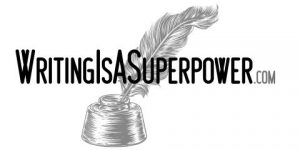
Contrary to what some gurus might tell you, there’s nothing magical about copywriting. It’s just clear, persuasive writing.
The best way for a beginner to learn copywriting is to learn by doing. First, understand the fundamentals and then practice until you’re confident. Then take writing jobs at freelance job sites to get real-world experience and build a portfolio.
This article will show you the fundamentals of copywriting and refer you to additional no-cost or low-cost resources. If you can write, you can succeed as a copywriter.
It’s Not Magic.
Copywriting is not magic. It’s merely a craft that uses words to persuade others.
Don’t overthink it. When starting, many writers want to spend months studying copywriting before they write a word.
They might pay big bucks for specialized courses or coaching from a guru. You don’t need that.
Paying a lot for training is just an attempt to buy confidence.
Instead of spending money and maybe going into debt, learn the basics from this article and related sources, then practice and write for freelance job sites.
Once you have the confidence to write any assignment that comes your way and a portfolio to prove it, go after better-paying clients.
Keep it Simple.
Don’t overthink it. Copywriting is more of a craft than an art, although creative intelligence does help.
Copywriting is selling.
As a copywriter, you’re either selling a product or service or, an action you want the target audience to complete, such as click a button, donate to a charity, call a phone number, complete a form, go to a website, support a candidate or accept an idea.
In the context of this article, I’ll present copywriting as if you’re selling a product. However, instead of a product, a copywriting project could be any form of persuasive writing.
You Know it When You See It.
To the target audience, compelling copy is engaging, but to the copywriting professional, good copy has specific reproducible characteristics.
It starts with an irresistible headline and continues in a sincere and friendly tone. Sometimes, good copy has a story that triggers an emotional response in the audience.
Good copy promises a valuable benefit in the form of information, a product or service that solves their problem or fulfills their desire.
The best copy has a pleasant rhythm and rationale that leads the audience through the message.
Ultimately, by building trust and engagement, the best copy inspires the audience to respond favorably to a call to action, such as “Order Now,” or “Call Today.”
It’s well-polished without grammatical mistakes and flows seamlessly from the headline to the call to action.
Visuals and text complement one another.
Good copy is not salesy.

Research is Essential.
Successful copy begins with research.
Before he types a word, a copywriter must know everything about the product, your target audience, and competing products in that niche.
Research often determines the success or failure of a copywriting piece.
The more you know about your target audience, the product, and the competition, the easier the job of writing will be.
Successful copywriters are, first and foremost, relentless researchers. They don’t write a word until they are experts in the product and thoroughly understand their target audience.
It’s All About the Target Audience.
Your target audience is the focus of the copywriting equation. Through their actions, they decide if your copy is successful.
When your target audience takes the prescribed action at the end of your copy, they are applauding your brilliant writing performance.
You are writing for their applause, and to get it, you must know as much as you can about your target audience.
Because people buy, or act, for emotional reasons, it’s critical that you find your prospect’s emotional trigger.
Take a moment to brainstorm the reasons anyone would buy the product you’re promoting, or otherwise be persuaded by your writing.
Try to imagine what they think as they make a buying decision or respond to your call to action.
If possible, talk directly to people in your target audience.
If you’re writing a piece of a client, your client may have market research, surveys, and summaries about the target audience.
These are a goldmine of information.
If your client has a website in the niche, Google Analytics will have demographic info on such as age, gender, and nationality.
Read the online product reviews of the product and competing products.
Often in reviews, customers will reveal the problem they hoped the product would solve, and whether they were satisfied or not.
Reviews will also reveal the pain points customers are experiencing. Later, when you write your copy, you might choose to focus on the customer’s frustration and how your product can end it.

Selling with Words
Amateurs make selling a painful, greedy process. That’s unfortunate because, at its best, selling is problem-solving.
It’s about helping people.
It gets back to understanding your target audience and understanding the problem your product solves or the desire it fulfills.
People buy for emotional reasons, then later justify their buying decision in retrospect based on logic.
In other words, as a copywriter, you want to trigger the prospect’s emotional buying impulse and also provide a rational reason to justify their choice to themselves.
Benefits appeal to the prospect’s emotions and features satisfy their need to justify their buyind decision.
Before you can sell with words, it helps to first empathize with your target audience.
As much as possible, put yourself in the shoes of your target audience. Understand, on an emotional level, their problems, needs and desires, AND how your product can help them.
Copywriting is about connecting with the target audience and showing them how your product solves their problem or otherwise gives them what they want.
It’s about encouraging them to try your product and then giving them a rational reason why they should.
Empathy: Priceless Insights
Earlier I mentioned that copywriting is mostly a mechanical process. This is true, but the keyword here is “mostly.”
In addition to learning the structure of persuasive writing, it helps immensely to have the capacity to empathize with your target audience.
Creative intelligence is also helpful, but for the moment, I’ll discuss empathy.
Empathy is the capacity to feel what someone else is feeling and understand them on an emotional level. Not everyone has that ability.
We either learn empathy as a child, or we never learn it at all.
The one thing that separates highly successful copywriters from the pack is empathy.
Empathy gives you insight into the problems your target audience faces. With this insight, you can write copy that speaks to your prospect’s heart. That’s persuasive writing at its best.
The Genteel Art of Seduction.
A mistake that is common with new copywriters is to try to force the target audience to buy. That never works, and it’s a sure sign of an amateur.
Selling is not a battle of wills. You can’t sell through domination, just as you cannot make friends through brute force.
Persuasion is the respectable art of seduction.

The Angle of Attack: How to Begin a Copywriting Project.
Start with a measurable objective in mind. What goal do you hope to achieve with your copywriting project?
With an objective in mind, write down a headline. This probably won’t be your final headline, write it down anyway.
In the beginning, the purpose of a headline is to keep your work focused.
Use the following list of questions to help you define the project and organize your research.
- What needs to be created? A sales letter, email, ad, other?
- What is the goal of the piece? Get people to buy, join, call?
- What product or service are you promoting?
- Can you get a sample of the product or see the service in action?
- What are the features & benefits of the product?
- Are the various models or versions of the product?
- How does your product differ from competing products?
- Is there a guarantee?
- Who is the customer or target audience?
- Are there endorsements or testimonials for the product?
- Why would someone buy this product?
- What are the details of the offer? Price? Payment options?
Style, Tone and The Writing Process
Once you’re knowledgeable of the product and understand the needs of the target audience, you’re just about ready to begin writing.
Before you start typing, determine your writing style, how long your copy should be, how to structure the message, and the formula you will use.
In most cases, it’s better to write in a warm, casual style. When your message is friendly, it cultivates trust in the mind of the audience and minimizes resistance to the message.
An exception to using a casual tone is if your audience is a group of professionals. In that case, you want to adopt a style they find familiar.
For example, if you’re writing about fluid dynamics for a group of engineers, write in a style and tone that is familiar to them.
Organize Messages for Greater Impact.
Extract from your research material the information you want to emphasize in your copy. Separate the info into three categories.
- Features & Benefits
- Supporting evidence and testimonials
- Audience characteristics
A product’s features are usually apparent. The manufacturer or distributor typically lists the features in the product description, but you might need to translate them into benefits.
Take a moment to brainstorm the benefits of a product. Here’s how to do it.
Draw two columns on a piece of paper or use a spreadsheet. In the left column, jot down all the product features, one feature per line.
After you have written down all the features, look at the first feature, and ask yourself, “So what? What does this feature mean for the customer?”
For example, the top feature of the WayFarer Sleeping bag is synthetic hollow-fil fibers. So what? What does that mean to the customer?
The bag is lighter, packs smaller, and keeps you warm even when it’s wet. (Benefit, benefit, benefit!)
Again, ask So what? What does that mean to the customer?
Because the bag packs smaller and is lighter, the customer can carry more food for longer treks, and because it keeps you warm even when it’s wet, it can mean the difference between life and death. (Deeper benefits!)
Write these benefits down in the right column and continue until you have converted every feature into benefits.
When you have a full list of product benefits, rank them from the most powerful to least powerful.
When you have the benefits organized, you’ll begin to see how to present your product to the target audience.

The Critical Elements of Persuasive Copy
Like a novel or a screenplay, persuasive copy has a structure that embodies several critical elements. Like a recipe for crème brûlée, if any of the ingredients are left out, the result is disappointing.
I cover these elements in more detail in my article Copywriting Basics.
- Headline (Get Attention) (Read the Four U’s of Headlines)
- Eye-Catching Visuals
- Customer-centered focus
- Benefits
- Separate the offer from the competition
- Create belief
- Proof of product claims
- A guarantee
- Call to Action
Formulas.
Now that you have the information organized and a clear objective in mind choose a copywriting formula.
First, let’s look at the granddaddy of all copywriting formulas, AIDA.
AIDA
In marketing, AIDA is probably the best-known sales formula. It was mentioned in the movie Glengarry Glen Ross, starring Jack Lemmon.
It’s the granddaddy of all copywriting formulas, but it has limitations.
AIDA reminds us to capture the prospect’s attention, cultivate interest in the offer, build desire for the product, and conclude with a call to action.
AIDA has a long history of success. However, it does have some shortcomings, particularly for a beginner. It doesn’t help us understand how to do these things.
Because of this limitation, AIDA works best as an analysis tool AFTER you’ve completed the project.
Instead of using AIDA in the beginning, use Bob Stone’s Gem.

Bob Stone’s Gem
Bob Stone’s Gem isn’t the only copywriting formula, but it’s probably the only one you need when you’re starting.
Bob Stone created this formula to help him quickly churn out successful sales letters and direct response ads, but it works for any form of persuasive writing.
And it’s easy to follow.
- Open with the products most significant benefit
- Expand on the benefit
- Tell the audience precisely what they’ll get, include all features & benefits
- Use testimonials and other proof to support product claims
- Show the prospective customer what they’ll lose if they don’t act on the offer
- Remind the prospective customer of the product’s most significant benefit
- Tell them to take action now and provide a solid reason why they should.
Write, Write, Write.
Copywriting boils down the figuring out what the customer wants and showing them how your product is the way to get it.
The best way for beginners to learn copywriting is by doing it. Learn the basics and then apply them over and over again.
First, understand the fundamentals and then practice until you’re confident. Then take writing jobs at freelance job sites to get real-world experience and build a portfolio.
Reading books or websites or, Heaven forbid, paying hundreds or thousands of dollars for training courses will not make you a confident copywriter.
And, without confidence, you’ll never write a single page of real-world copy or get paid for it.
Write Badly with Pride.
Screenwriter, author, and Director of the Graduate MFA Program in Screenwriting at California State University, Eric Edson, is legendary among creative writers for his advice to write badly with pride.
This is true for copywriters as well.
We writers tend to be the worse perfectionists on earth. Professor Edson reminds writers of every stripe that in perfection lies “writerly death.”
“Writing is a craft,” Edson says. “It’s a craft exercised with words.”
When we give ourselves to write badly with pride, it takes the pressure off. Writing begins to feel like play. That’s what you want. Imagine getting paid to play with words.
Like throwing mud pies at a wall, writing starts by throwing words on a screen. As a copywriter, if you’ve done the research and follow a formula, you’ll have a pattern in mind, but don’t let that stifle your impulse to write.
Keep the channel open and get the words out. Write first and then edit. You can’t edit a blank page.
Growing Beyond this Article.
There is an infinite demand for copywriters.
If you’ll do the work and challenge yourself to go beyond your comfort zone, you can earn six-figures a year as a copywriter.
And get there within six months by following the advice in this article and the advice in the Recommended Reading linked at the bottom of this article.
The best way for a beginner to learn copywriting does not have to cost a lot of money, but it does take sustained effort, patience, and commitment.


